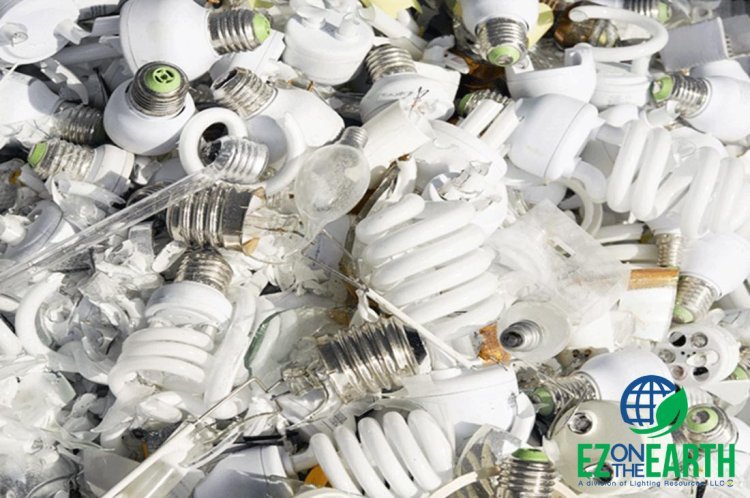Mercury Recycling: A Crucial Step Towards Environmental Sustainability

Mercury is a hazardous yet valuable element widely used in various industries, from lighting and thermometers to batteries and dental fillings. While its applications are diverse, mercury poses significant environmental and health risks when not handled properly. Mercury recycling offers an effective way to manage this toxic element, preventing pollution and conserving resources.
This article explores the importance of mercury recycling, its process, and its benefits for the environment and public health.
Why Is Mercury Recycling Important?
1. Environmental Protection
Mercury is highly toxic and can contaminate air, water, and soil if improperly disposed of. Recycling ensures mercury is safely extracted and reused, reducing the risk of environmental contamination.
2. Health Safety
Exposure to mercury can lead to severe health issues, including neurological damage, kidney failure, and developmental problems in children. Recycling minimizes the chances of mercury exposure to humans and wildlife.
3. Resource Conservation
Mercury is a non-renewable resource. Recycling allows industries to recover and reuse mercury from discarded products, reducing the need for mining and extraction, which can be costly and environmentally damaging.
4. Regulatory Compliance
Many countries have stringent regulations governing the disposal of mercury-containing products. Recycling helps businesses and individuals comply with these regulations, avoiding potential fines and legal issues.
Products That Contain Mercury
Mercury is found in various everyday products, making its recycling essential. These include:
- Fluorescent Lamps: Compact fluorescent lamps (CFLs) and other fluorescent lighting contain small amounts of mercury.
- Batteries: Some older batteries, especially button cell types, contain mercury.
- Thermometers and Barometers: Traditional devices use mercury for its thermal expansion properties.
- Dental Amalgam: Mercury is a key component in dental fillings.
- Electrical Switches and Relays: Mercury is used for its conductive properties in some electrical components.
The Mercury Recycling Process
Recycling mercury involves a specialized process to safely extract and purify the element for reuse:
1. Collection and Sorting
Mercury-containing products are collected from households, businesses, and industrial facilities. These items are sorted based on their type and mercury content.
2. Transportation to Recycling Facilities
Collected items are transported to licensed mercury recycling facilities equipped to handle hazardous materials safely.
3. Extraction of Mercury
Specialized equipment is used to extract mercury from the products. For example, in fluorescent lamps, the mercury vapor is captured, and the glass and metal parts are separated for recycling.
4. Purification
The extracted mercury is purified through a distillation process to remove impurities, ensuring it meets the standards for reuse in industrial applications.
5. Reuse or Safe Storage
The purified mercury is either reused in manufacturing or safely stored to prevent environmental release.
Benefits of Mercury Recycling
1. Reduces Pollution
By recycling mercury, industries prevent the release of toxic mercury into the environment, protecting ecosystems and water sources.
2. Promotes a Circular Economy
Recycling supports a circular economy by reusing materials rather than extracting new ones, reducing resource depletion.
3. Energy Efficiency
Recycling mercury requires less energy compared to mining and refining virgin mercury, reducing the carbon footprint associated with its production.
4. Economic Benefits
Recovered mercury can be sold or reused in manufacturing processes, creating economic value from waste.
5. Supports Regulatory Goals
Mercury recycling aligns with international efforts such as the Minamata Convention on Mercury, which aims to reduce mercury emissions and releases globally.
Challenges in Mercury Recycling
While recycling mercury offers numerous benefits, it also poses challenges:
- Lack of Awareness: Many people are unaware of the importance of recycling mercury-containing products.
- Collection and Transportation: Proper handling and transportation of mercury-containing waste require specialized facilities and trained personnel.
- Cost: Setting up and operating mercury recycling facilities can be expensive, which may deter investment in some regions.
- Safety Concerns: Handling and processing mercury require strict safety protocols to prevent exposure and contamination.
How You Can Contribute
1. Dispose of Mercury Properly
Avoid throwing mercury-containing items in regular trash. Instead, drop them off at designated recycling or hazardous waste collection centers.
2. Choose Alternatives
Opt for mercury-free products when available, such as LED bulbs instead of CFLs.
3. Support Recycling Programs
Encourage and participate in local mercury recycling programs to ensure proper disposal and recovery of this hazardous element.
4. Educate Others
Spread awareness about the importance of mercury recycling and its benefits for the environment and public health.
Conclusion
Mercury recycling is a vital practice in the quest for sustainability. By recovering and reusing mercury from discarded products, we can protect the environment, safeguard public health, and conserve valuable resources. Whether through individual efforts or collective action, embracing mercury recycling is an essential step toward a cleaner, healthier planet.
What's Your Reaction?













